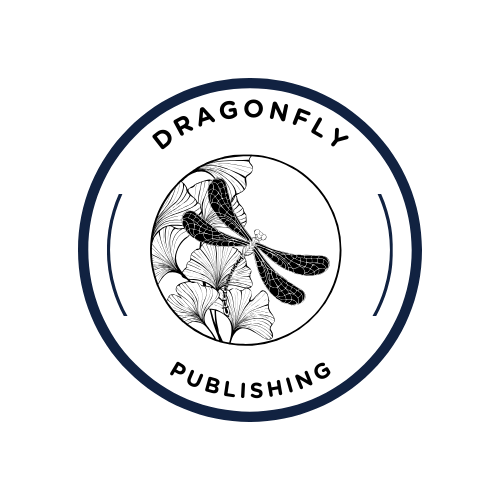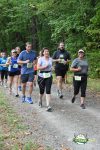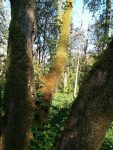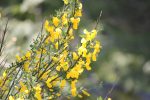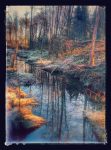We recently saw Alejandro González Iñiárritu’s The Revenant. I knew the director wanted to portray the western frontier as it was then, and that environmental concern was one of his reasons for doing so. The story is based upon a real story of a fur trapper named Hugo Glass who was nearly killed by a grizzly and came back “from the dead”–the word revenant refers to a return–to find the man who left him for dead and was responsible for killing his son. The Guardian noted:
“The Revenant really addresses a lot of the things I have to say now.” [Alejandro González Iñiárritu] For him, this story of 1820s America is really about the roots of capitalism. “The way these men deal with nature… Cutting trees – profit from it. Killing animals – profit from it. And the impact they had on the [indigenous] communities, the broken promises and contracts and the blindness of seeing them as people, the fear of the otherness, the judgments and the prejudice of the colour of the skin and other cultural beliefs… We haven’t escaped from that kind of fear and prejudice.”
I think the real story might have taken place in Missouri, but Alejandro went further west, and north, to try to find a place to film the isolated wilderness as it was. He chose Alberta (presumably not near the large swaths of dead boreal forest where the oil sands are) and Argentina, and filmed outdoor scenes only in natural light. The result was a moving tale, and a very raw and gory one, so keep that in mind if you want to see the movie.
For me, the main appeal was the way the outdoors was filmed; there are beautiful old west vistas that capture what it was like before some of our biggest environmental impact. There are vast skies and panoramas that show the real last vestiges of somewhat undisturbed natural beauty. I say somewhat because the camera isn’t picking up our impact, if it exists there, so what we see in the movie are absolutely huge, breathtaking natural areas that don’t exist for us unless we travel far and to the wild. Or, impossibly, to the past when these natural monuments of wilderness once commonly existed. Outside of the rather ugly, downtrodden camps that the fur traders lived nomadically in, the other areas were magnificent, and it was like seeing the movie Avatar and thinking I want to go there.
I got to thinking that seeing such large, untouched mountains and vast, uninhabited-by-humans acres of meadows and pristine forests and clean, fresh rivers and clear and untouched skies were something that will someday be even more gone than today. And isn’t it sad that we need these areas to redeem ourselves but the places are disappearing, thanks to development and industry that grabs up our natural resources. It’s like watching a slow death. And, as a person living in a metropolitan area, what I wouldn’t give to move away and live in a wild forest or near a clean, rushing stream. But, where is that today? Another thing Iñiárritu filmed were the wild sounds–the wind, coyotes yapping in the background, bird calls, growls of bears, roars of rivers, and ultimately the silence beyond those sounds, the silence that rises above our world of human noises like distant groaning airplanes or the hum of traffic or the jangle of radio music. It’s like this place I want to grab and hold, and lie down in. Or walk through. Like a museum of natural art.
The story itself was interesting and suspenseful, but the cinematography drew me in. It made me feel like we need more of these reminders of the wild in modern movies and books. Because either we’re going to put more carbon in the air to fly or drive to them, or we will never see them because even if they are not developed by industry or real estate, these areas are often impacted by tourism.
Luckily for me, I have been to areas just like what was filmed in the movie, being as efficient as possible by traveling with a car-load of others in a low-gas-intensive vehicle. But I need to go back. We all need to experience these places. It does occur to me that many folks may not share my views and my exaltation of wild places. But I argue that we all need those places, for nature redeems us whether we know it or not.
I once interviewed John Atcheson, who wrote one of my now favorite novels, A Being Darkly Wise. I asked John about the magic of British Columbia’s wilderness just north of me, and he said:
OK, first let’s gather around a campfire, somewhere in one of the most remote areas left in North America. Beyond the thin, fragile fringe of light afforded by the fire, is a vast forest, wrapped in a darkness that is unimaginable to those who have passed their lives in cities and towns. The trees hiss in the wind, obscuring any sounds, leaving us sightless and senseless. We have our backs to the unknown, and the unknowable. Quiet now. Did you hear that … Just a branch crashing to the forest floor says one grizzled old guy hopefully. The circle pulls in tighter.
This is the kind of freedom I long for. The freedom to be lost in a world that we were born into, not the world we made. The freedom to be open to the call of the wild and to be suspended by it.
So here it is, a Friday, and I’m trying to plan my weekend running. Mundy Park is probably going to be it again, for it’s close and most of the trails will be dry enough to run on, even in our continued rainy season. But I really need, sometime fairly soon, to get further away. I’m hoping maybe for our 10-year anniversary in May we can do a trail run/hike and a weekend tent-camp.
